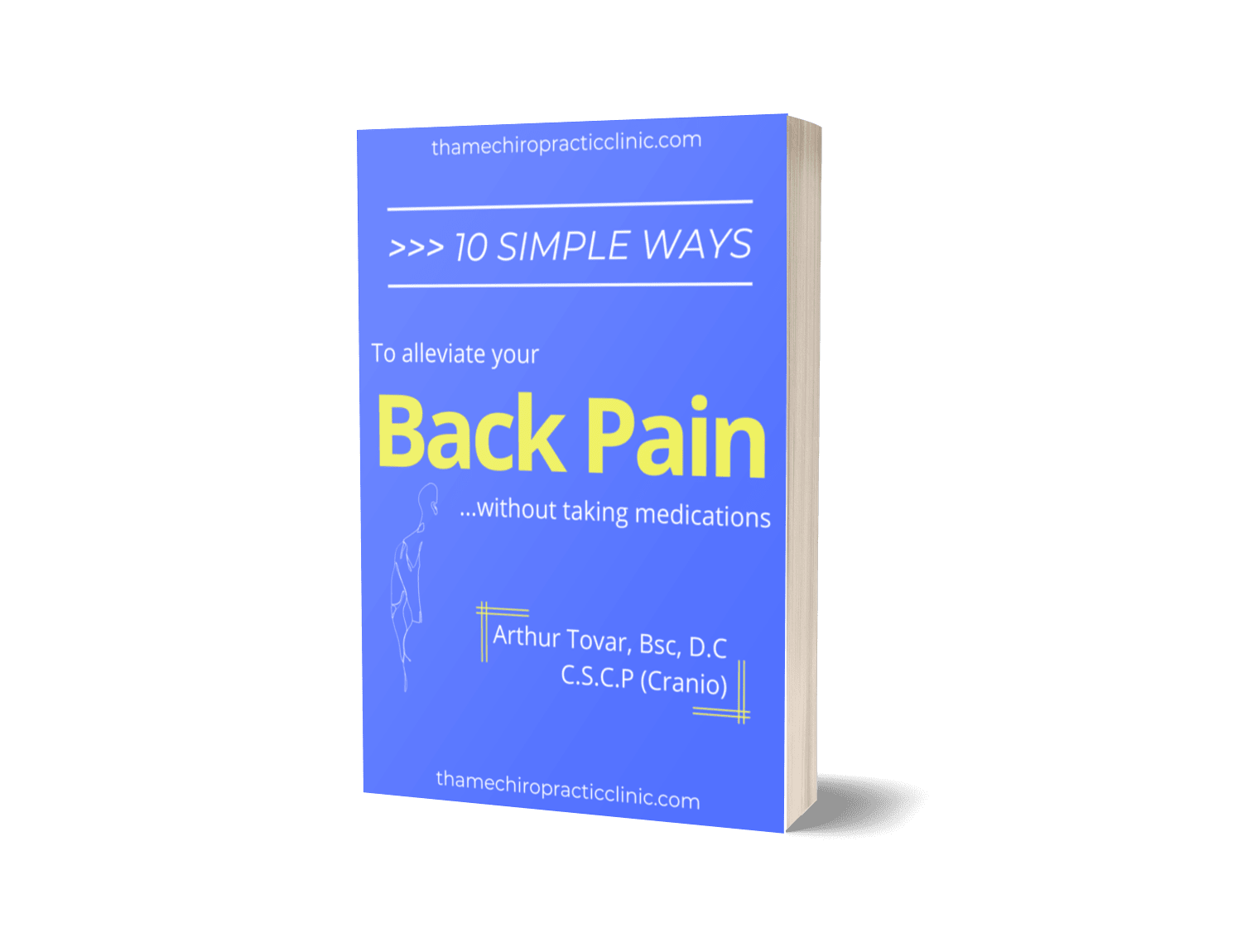10 Natural Ways to Stop Annoying and Debilitating Headaches and Migraines

Arthur Tovar, graduated Magna Cum Laude (honours) with the Doctor of Chiropractic degree from Sherman College of Straight Chiropractic in South Carolina, USA. He also holds a Bachelors in Science. He has done postgraduate studies holding Certification in Craniopathy with SOTO USA (CSCP) as well as Advanced proficiency in Sacro Occipital Technique (SOT) with SOTO Europe. He also hold certification in applied Kinesiology from the (ICAK).
He practiced in. Boston MA, (USA) for 2 years and then moved to the UK and has been serving families in the Oxfordshire area since 2007. He has assisted in teaching for Soto Europe and has trained many Chiropractors in SOT technique. He has a passion for working with expecting mum’s and children and is a member of the ICPA (International Chiropractic Paediatrics Association).
He is also a Member of SOTO USA, Soto Europe and an active member of the International College of Applied Kinesiology, (ICAK). His passion is teaching people simple health tips and techniques on how to maintain our spinal health and overall true health potential. “The reason we all have symptoms and ill health is because we have lost something which is true health”. True health is the body’s capacity to heal and work with full capacity. We can recover true health by allowing free communication between our brain and body.
1) WATCH YOUR TECH TIME
Most of us spend too much time in front of a computer, phone, tablet or other type of device which aggravates the natural position of your neck and shoulders. Moreover, the blue light emitted by these devices creates further stress in brain receptorsthat stimulate the production of Cortisol (stress hormone).
Use frequent breaks when in front of a TV, Computer, Phone or tablet. Use glasses that block blue light from these devices when possible. Set up your iPhone and tablet to warmer light after sundown.
2) WATCH YOUR DIET
Watch your diet and Hydration levels. Too much sugar can spike insulin levels and cause headaches. Also fasting and being dehydrated can exacerbate your migraines and headaches.
Make sure you eat plenty of fruits and vegetables which contain water and help you stay hydrated. Drink water when hungry, this is most likely a signal from your brain that you are thirsty instead of hungry. Before you reach for that pain medicationdrink two glasses of water and lay down for 15 minutes with your head back.
3) WATCH YOUR POSTURE
Be aware of your posture when sitting for prolonged periods. Slumped shoulders, head slouched forward, poor posture when sitting, all of which can cause more tension in your traps and shoulders.
Watch your posture even when walking, hiking and things that you may be carrying. Avoid carrying heavy purses or backpacks on one shoulder only or low on your back. Use both straps or centre the weight in your back. These poor carrying postures put unnecessary tension in your shoulder and neck, thus creating triggers for headaches.
4) AVOID CERTAIN FOODS
Decrease or avoid foods that create more tension and stress. Certain foods tend to create more of an upset stomach and our gut biome and health has been directly linked with symptoms of discomfort such as headaches and migraines. Dairy, Gluten and Wheat can trigger migraines for certain people.
Also, peanuts, alcohol, Peppers, Potatoes, Tomatoes and Aubergine, plus Tobacco. Nightshades have been linked with more inflammation in the body, especially around our joints. Salty foods can increase blood pressure and dilate small vessels in the head triggering a headache or migraine. Avoid caffeine and alcohol, especially if you suspect that you are experiencing a migraine, as this will dehydrate you further.
5) REDUCE YOUR STRESS
Managing stress is easier said than done as we get caught up in everyday life. Take a 5-minute break and breathe in and out to oxygenate your body properly. When we are under stress we do not breathe properly which causes Hypoxia or lack of oxygen to many tissues in our body. Find activities to counteract your stress. Such as walking in the woods. Riding a bike or talk to a loved one on the phone. Taking time for yourself is important, recognising when stress is getting too much. Stress not only can cause you a headache but can increase your cortisol levels, thus causing you to store more fat. Making you feel tired which lowers your immune response. This can also rob you of your libido, disrupt your digestion, and not allow you to process foods properly. It also can create acid reflux and other digestive issues.
6) TRACTION YOUR NECK PASSIVELY
Most of us have what we called “Tech” or “Text Neck”, This means our heads have gone past our shoulders midline. This creates further tension in our traps and neck muscles. Making our neck muscles constantly be under tension trying to carry our head. Our head suddenly becomes double its weight. Use a towel and roll it up into a tight sausage and tuck it under your neck while laying down. Try to carry your chin at least 110 degrees back while lying flat on your back. Do this for 2 to 3 minutes at a time once a day and increase by 30 seconds each day. If you feel faint or lightheaded, stop and consult with your GP. Tractioning your neck passively once a day can decrease the frequency of headaches. This has been my personal clinical experience.
7) REDUCE SITTING TIME / ALTER SITTING DOWN
If at work, try to use a standing desk on and off or take frequent breaks. Also, try using a saddle stool instead of a regular chair. I recommend a device called a SitFit by Sissel. I can not stress the value of this cheap solution. Especially if you will be attending a seminar or conference and will be sitting for many hours in an uncomfortable hotel chair. This device improves your posture, reduces fatigue on your lumbar spine, thus reducing fatigue to your shoulders and neck area.
8) SLEEP MORE, GET TO BED EARLIER
Sometimes a headache is just fatigue and lack of sleep for many. Try to get to bed at a time when your cortisol levels are going down between 8:00 and 9:15 pm. Your cortisol levels will start to rise up at around 10:00 pm until 12:00am and getting to bed at these times can sabotage the quality of your sleep. Find a sleep routine, the body likes routines and benefits from these the same way you did when you were a baby. 8 to 9 hours of deep-quality sleep can make a real difference. Sleep reduces stress, lowers cortisol levels and blood pressure, and helps your body and nervous system repair and heal properly.
9) MOVE AND STRETCH YOUR NECK
Moving your neck up and down, side to side, holding it to one side with the opposite hand and the same for the other side. Bring it back to the side and stretch it for 10 to 15 seconds at a time.
Just bringing awareness of movement to these joints can ease up a poor position that you may have had with your shoulders and neck area. Shoulder standing stretchesrolling shoulders back and forth, lifting your arms to the side parallel to your body while standing. While sitting, roll your shoulders back and forth to release tension and bring blood to these tissues.
10) GET YOUR SPINE CHECKED AND ADJUSTED
Go see a Chiropractor or Osteopath and get your spine checked for subluxations/fixations in your spine. Getting a plan of care to correct these subluxation and misaligned vertebrae in your spine will allow better communication between your brain and small muscles that control your neck and head movements.
Research and studies have shown that when these segments in your neck/Cervical area have subluxations/fixated vertebral segments then the small muscles in that area tend to shut off and only the big muscles turn on. Giving less attention to these areas of the body make it more prone to injury which then causes symptoms such as pain and headaches.
CONCLUSION
These were top tips on how to manage your headaches and migraines safely and effectively TODAY! These tips will have a positive benefit on your neck, head and shoulder discomfort. They will also increase your overall energy and vitality! If you apply these basic tips every day, you will see changes to the quality of your life! Do not forget to get your spine checked as soon as possible by a qualified Chiropractor.
HEALTH ADVICE DISCLAIMER
We make every effort to ensure that we accurately represent the injury advice and prognosis displayed throughout this guide.
Examples of injuries and their prognosis are based on typical representations of those injuries that we commonly see in our clinic. The information given is not intended as a representation of every individual’s potential injury. As with any injury, each person’s symptoms can vary widely and each person’s recovery from injury can also vary depending on background, genetics, previous medical history, application of exercises, posture, motivation to follow advice and various other physical factors.
It is impossible to give a 100% complete accurate diagnosis and prognosis without a thorough physical examination and likewise the advice given for management of an injury cannot be deemed accurate in the absence of examination from a General Chiropractic Council Registered Chiropractor at our Clinic.
We are able to offer you this service at a standard charge. Significant injury risk is possible if you do not follow due diligence and seek suitable professional advice about your injury. No guarantees of specific results are expressly made or implied in this report.
This information is protected by copyright law and international treaties. Unauthorized reproduction, distribution, or alteration of this document, in whole or in part, without prior written permission from Thame Chiropractic Clinic, is strictly prohibited. For permission requests, please contact
Get yourself assessed asap! by a qualified Professional such as a: GP, Chiropractor, Osteopath or Physical Therapist. Knowing exactly what may be causing your sciatica is essential as I believe that knowing is always half the battle. Your Chiropractor or Osteopath may do Neurological, Kinesiological and/ or Orthopaedic tests to asses what may be causing your sciatica symptoms. These are usually caused by a herniated or slipped disc in your lumbar spine and depending on the results of your tests you may need further imaging such as MRI scan to asses the cause of the sciatica and get a more accurate prognosis.
Arthur Tovar, BSc, D.C. Hons, CSCP, Craniopath (U.S.A)
Thame Chiropractic Clinic
6A Buttermarket
Thame, OX9 3EW
01844 212100

